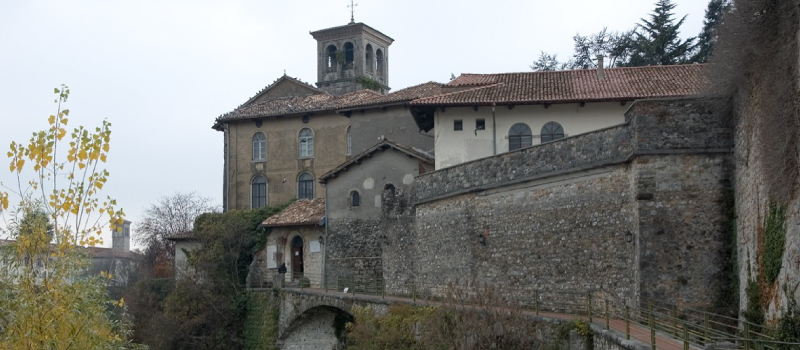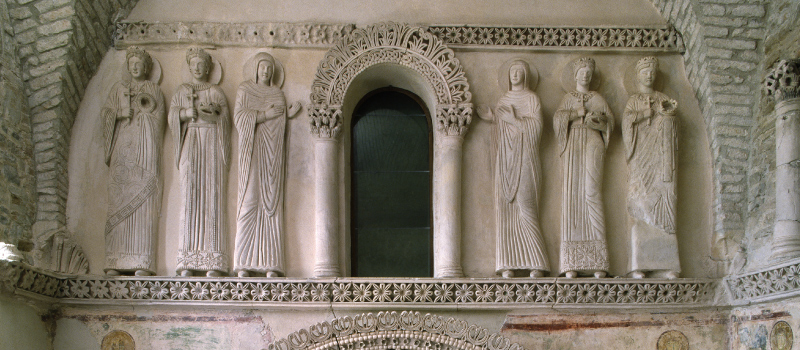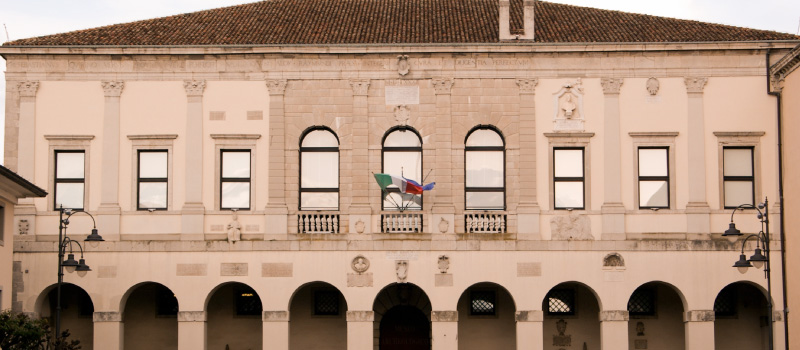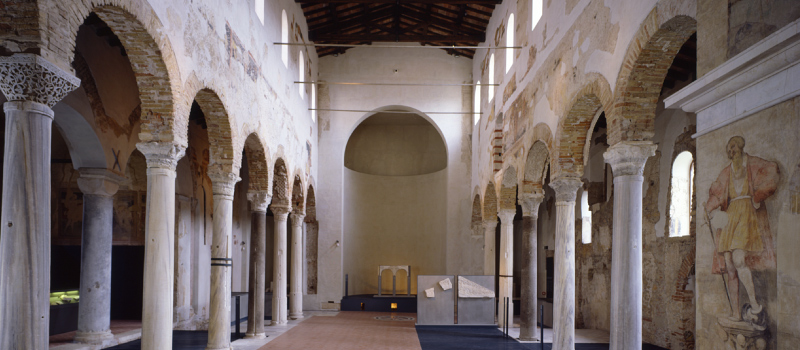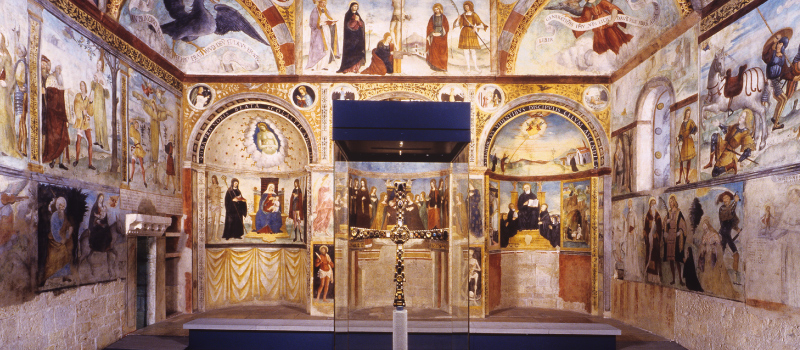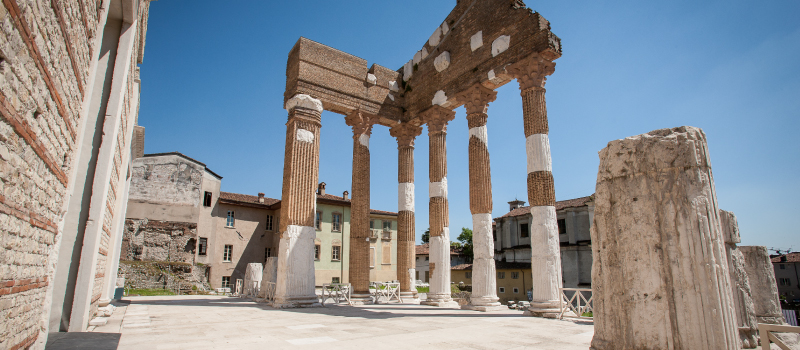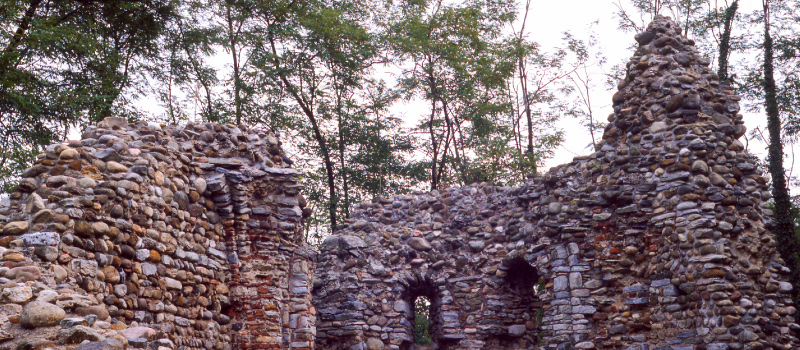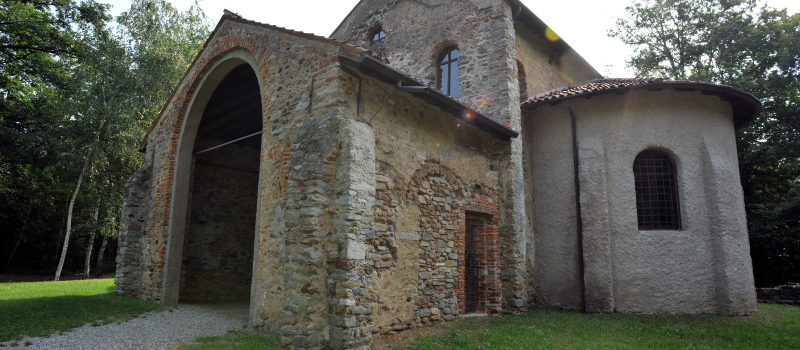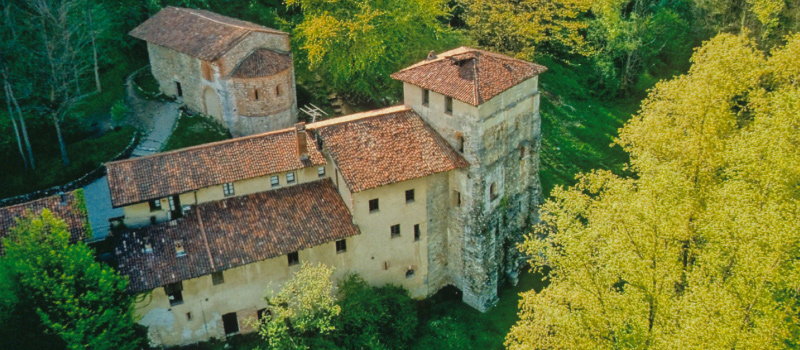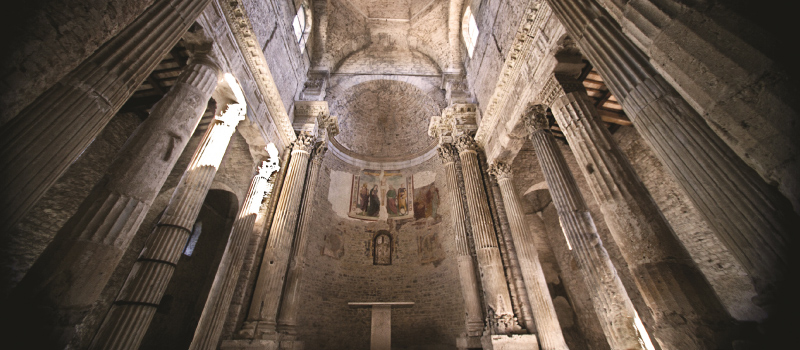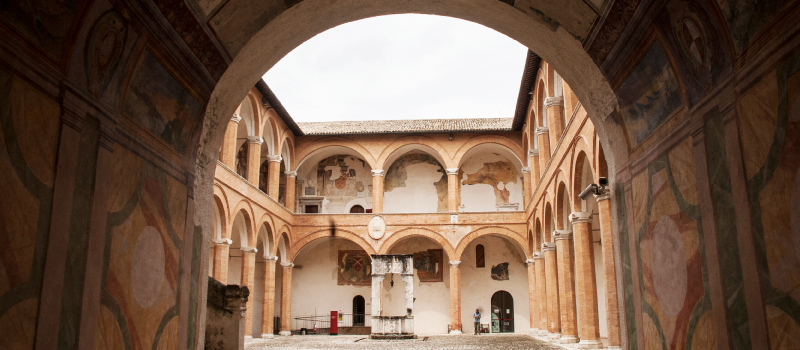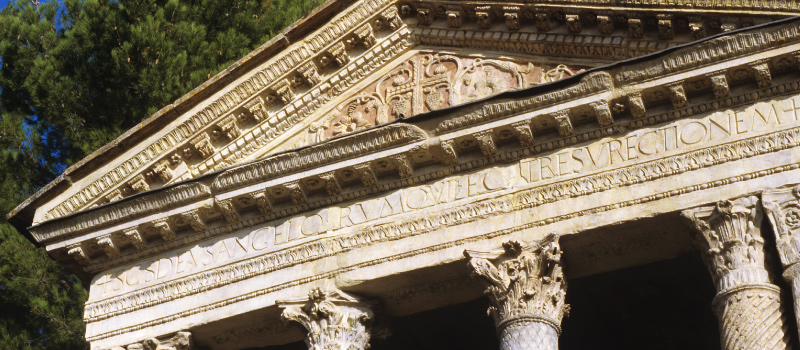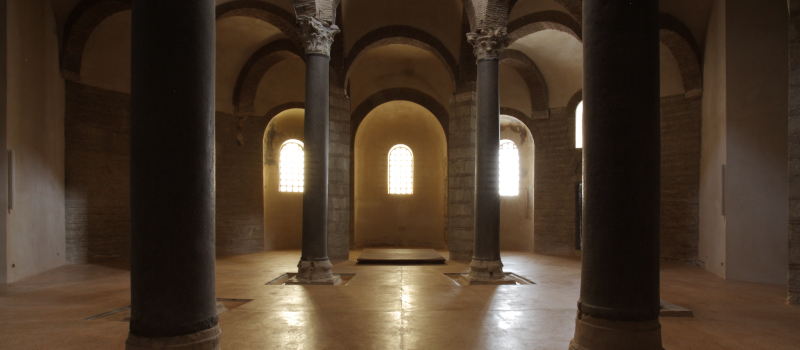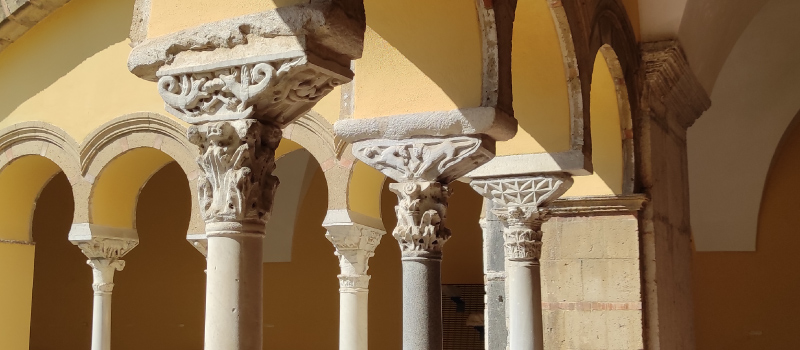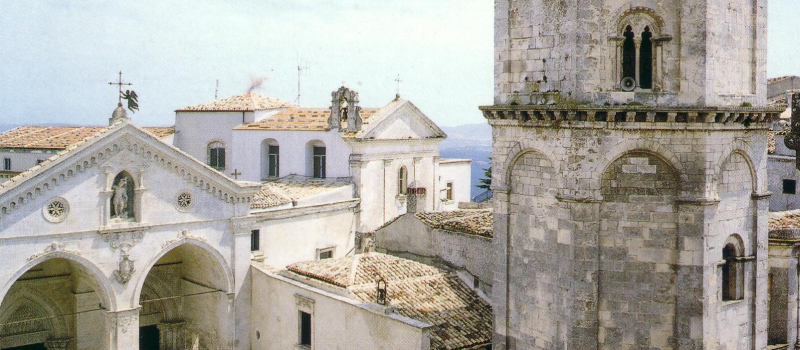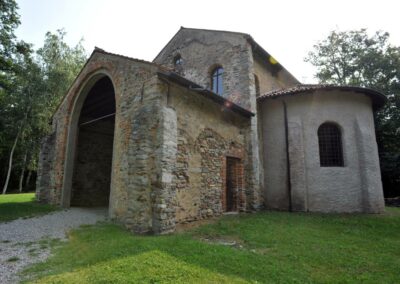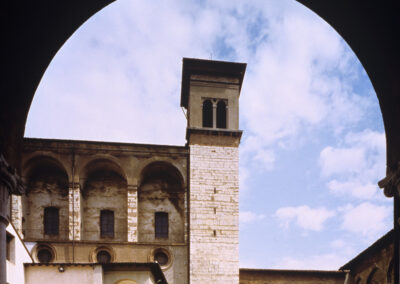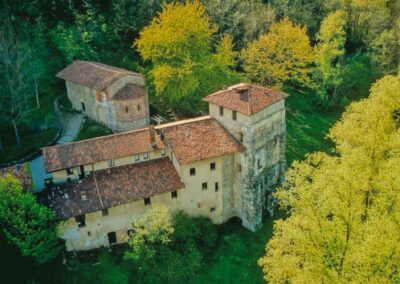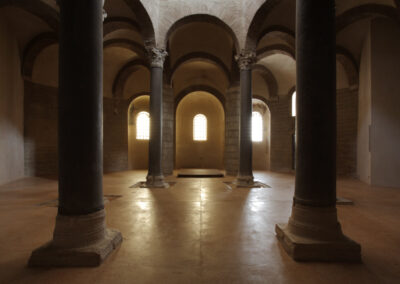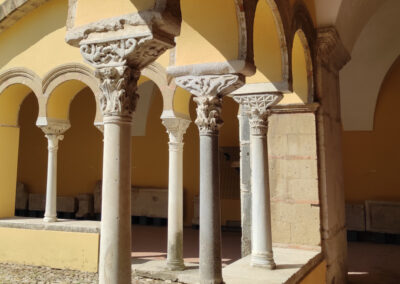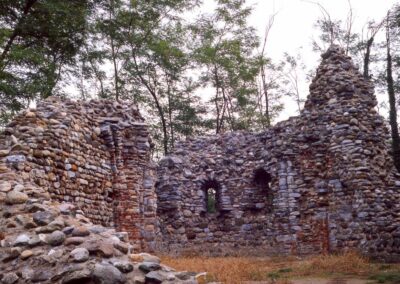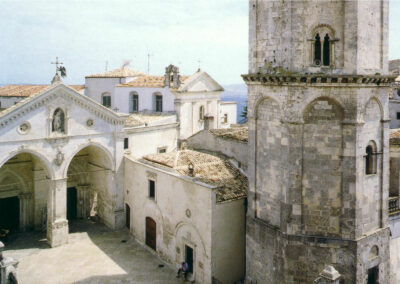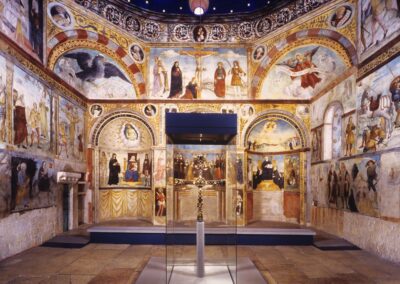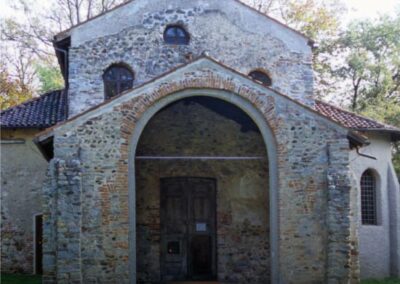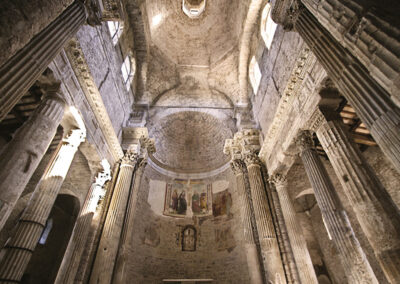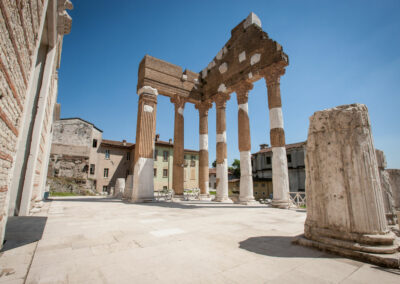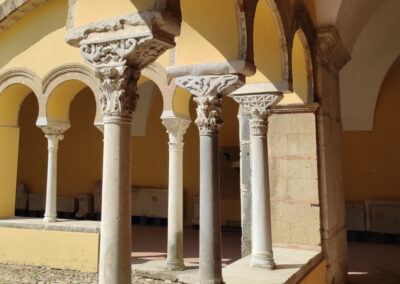The Intentional Re-use
The intentional re-use of Roman worked stone in the Lombard period
The Campello church (or Tempietto – i.e. ‘temple’) on the River Clitunno is a striking example of the deliberate re-use of Roman building components in Lombard times, evidence of the existence of common thematic developments in the locality.
In nearby Spoleto, capital of the duchy, this widespread re-utilization forms the basis of an itinerary through the town leading to the church of San Salvatore which, like the Clitunno ‘temple’, bears witness to the intentional – and politically expedient – re-use of old architectural blocks, and the ascent to the Museo Nazionale del Ducato, where several items demonstrate the persistence of this tendency in Romanesque times.
A distinction must be made between the intentional re-use of robbed architectural components (spolia) for ideological purposes, and pragmatic recycling with no ulterior aim, i.e. the simple re-use of building material that was part of some previous edifice – for example in the basement of a new construction.
The Tempietto was built over a chapel that stood on the River Clitunno from material that derived from Roman buildings located on nearby hills. Together with the church of San Salvatore in Spoleto, it is a tangible manifestation of a strategy employed by the Lombard elites to demonstrate their social status and legitimate their power, presenting themselves as the heirs of Classical civilization and culture.
Date: 18/12/2018 – 10/06/2019
Region: Umbria
Town: Campello sul Clitunno e Spoleto
Subject: The Intentional Re-use
The “Lombards in the Limelight” project was organized to make known to a wider public the museums of the seven towns in the serial site (Cividale del Friuli, Brescia, Castelseprio-Torba, Spoleto, Campello sul Clitunno, Benevento, Monte Sant’Angelo), in collaboration with one another and several national museums with Lombard/Early Medieval sections.
This encounter involves 7 exhibition themes, which are divided between the 13 museums listed below.
Tempietto sul Cltiunno di Campello sul Clitunno
The Tempietto sul Clitunno is a temple-shaped chapel built of re-used Roman architectural components. Inside there is an apse decorated with relief sculpture and wall paintings inspired by Christianity dating to the 8th century.
Museo Nazionale del Ducato di Spoleto
Since 2007 the national museum has narrated the Duchy of Spoleto’s historic, political and cultural development, with a collection of 4th to 15th century AD finds from the city and its surroundings.
A temple, which looks like an ancient temple. It has ancient columns, a pediment with a tympanum, an inscription running along the façade. Near the springs are the old dwellings of nymphs and satyrs, celebrated from the dawn of time. It is easy to imagine a procession of young men and women bringing offerings to ancient pagan gods when the Roman empire was at its height. But another procession must be imagined in front of this temple: a line of hard-working Lombard craftsmen and labourers, intent on bringing there and using once more Roman worked stone blocks, marble and columns, recovered from other locations nearby.
Surrounded by hammer blows, shouted orders from master builders, the din of construction work. And them, the Lombards, restoring and reassembling decorations, ornaments, and pieces of inscription. The fall of the empire had left behind only ruins, the result of violence but above all of neglect and abandonment.
Like frightened beasts, the poor had sought shelter in the now empty ancient buildings, and the new potentates had stripped them of material to build themselves luxurious new houses. But without a project, without a plan.
Everything had been done in response to need or haphazardly. But it is not necessity or chance that drives the architects of Clitunno and Spoleto – or indeed their brothers in Brescia and Benevento – to seek to restore these ancient splendours. It is the desire to recreate antiquity, to re-propose it in a new dress.
The Lombards restore.
They build walls and raise up columns to build a temple that is a church for their new creed, a reference point for their new community. When they get their hands on pieces of statues, friezes or inscriptions, they study them to understand their original function, and then construct buildings that incorporate them, like new settings for the precious family gems. This is not the simple re-use of material, but its rebirth.
A new world order in which Lombards and Romans are no longer distinct but form a harmonious and connected whole. Classical in the deepest sense of the word – that is, something that goes beyond epochs and unites peoples, becoming a model. Classical because now they are imbued with Classical culture, no-longer-barbaric barbarians: the Lombards.
Mariangela Galatea Vaglio

